Big Woods Natural Area
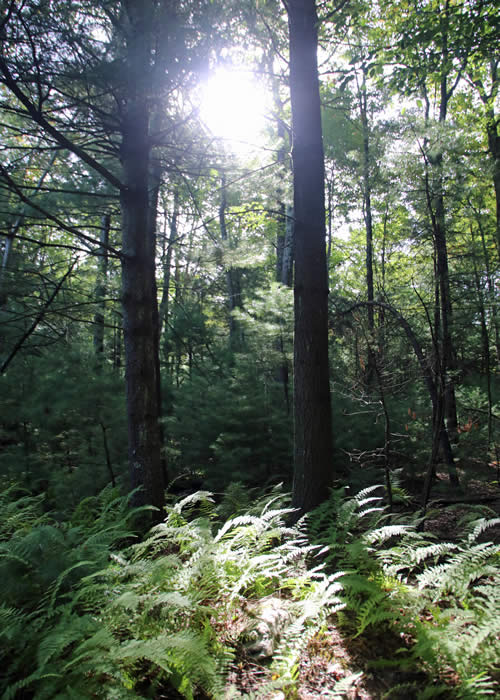 IF YOU GO
IF YOU GO
Where: 2455 Forest Drive in Chestnuthill Township, Pa. From either Route 209 or Route 715, take Neola Road to Sherwood Forest Road. Follow Sherwood Forest Road for 1.5 miles to Ash Road on your left (check your odometer; the street sign is hard to see). Go left on Forest Drive, which looks like a driveway, but dead ends at the trailhead. Please don’t block the gate.
GPS coordinates: 40.968006, -75.378331
Trail information: One blazed trail with many side spurs to create your own loop. Trail is hard-packed and mostly level.
![]()
• Monarch butterfly larva munches on milkweed
KNOW BEFORE YOU GO:
• Open dawn to dusk.
• Be respectful of homeowners whose private property adjoins the natural area.
• No fires.
• No ATVs or other motorized vehicles.
• Hunting permitted as part of the PA Game Commission’s Hunter Access Program. Wear fluorescent orange during hunting season. Click here for information.
• Leashed dogs welcome. Owners must clean up and carry out waste.
• No sanitary facilities or trash receptacles. Please pack out whatever you pack in.
• Big Woods Natural Area is part of the West End Greenway: West End Regional Park, Big Woods, Sherwood Forest Preserve and State Gamelands 186. Though not yet fully connected, parts of the greenway are within walking distance of each other on public roads.
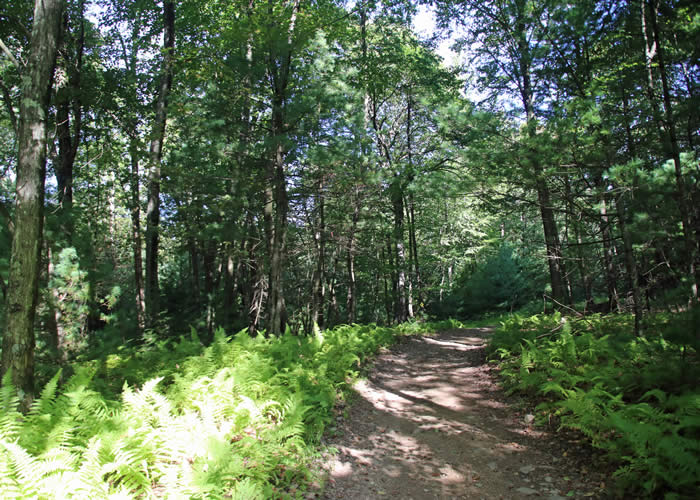
The Big Woods a worthy public preserve
By Carol Hillestad
Patiently, persistently, over a period of 17 years, Chestnuthill Township supervisors have assembled hundreds of acres of forest for public recreation — the land that makes up The Big Woods Natural Area.
Ambrose Cavalier, 15, and his father, Forrest, have hiked and biked here often. And they have great trail mapping skills. Who better to help me plan an interesting loop through fall woods?
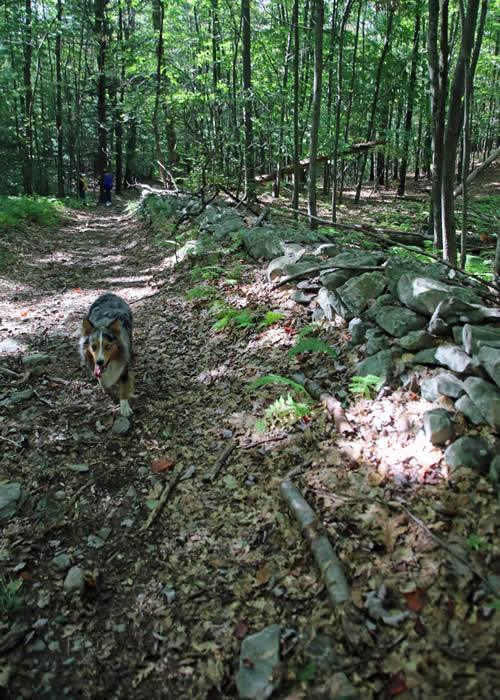 Though still early September, it felt like fall when wildlife photographer Nancy Hopping and I met Ambrose and Forrest at the Big Woods north trailhead. The plan was to use the blazed trail, marked with black arrows on bright yellow squares, as the basis for our hike.
Though still early September, it felt like fall when wildlife photographer Nancy Hopping and I met Ambrose and Forrest at the Big Woods north trailhead. The plan was to use the blazed trail, marked with black arrows on bright yellow squares, as the basis for our hike.
The trail starts out wide and open through a field of milkweed, Queen Anne’s lace, goldenrod, and sweet fern. Footing consists of rocks and dirt, but it is hard-packed and mostly level — fairly easy going. Big puddles along the way support water striders, pollywogs, a frog or two and even a few red-spotted newts in the largest one we pass.
Aside from these puddles and small intermittent creeks, Big Woods doesn’t have lots of water. But this upland natural area protects the clean waters of McMichael Creek as it meanders to Brodhead Creek in Stroudsburg, and then on to the Delaware and the Atlantic Ocean.
By protecting the creek, this land also protects drinking water and habitat for native trout. Any time a natural landscape is paved over with asphalt and covered with roofs, stormwater no longer sinks slowly and naturally into the earth. It scours away, polluting creeks and causing erosion and flooding downstream. So aside from protecting water quality — and our tradition of hiking, hunting and the outdoor life— Big Woods is protecting businesses, homes and lives, as well.
With Ambrose in the lead, the trail takes us through an open, sunlit woodland of white pine and hemlock, chestnut oaks and beeches, maples and birch. We pass loose stone rows and precise dry-laid stone walls — evidence of a long-ago builder’s skill and our area’s agricultural roots.
Nancy’s eye for the unusual has us all backtracking to see a patch of odd plants. In shape, they look like ghostly Indian pipes. But these are tinged with red, a plant called pinesap or false beechdrop. Like Indian pipes, they have no chlorophyll, so their roots get nutrients from fungi underground, which in turn depend on tree roots. And they are related to the blueberry!
We take a couple of wrong turns and many more stops to inspect interesting mushrooms. (Are those chanterelles? What’s that in the leaf litter that looks like saltwater coral?) We meet four riders on horseback and hear a pileated woodpecker drumming for insects.
Our loop leads back through the pines and open woods to rejoin the yellow trail. With the trailhead in sight, Ambrose makes one more discovery. Fat monarch caterpillars are placidly munching the milkweed we breezed by two hours ago — a fitting end to a morning in Big Woods, thanks to the wise people of Chestnuthill Township.
Carol Hillestad is a hike leader and writer for Get Outdoors Poconos, a grant-funded series administered by Brodhead Watershed Association.
Photos and video by Nancy J. Hopping
 |
|
| Little Bear patiently waits while Forrest and Ambrose Cavalier and Carol Hillestad (background) hatch a plan. |
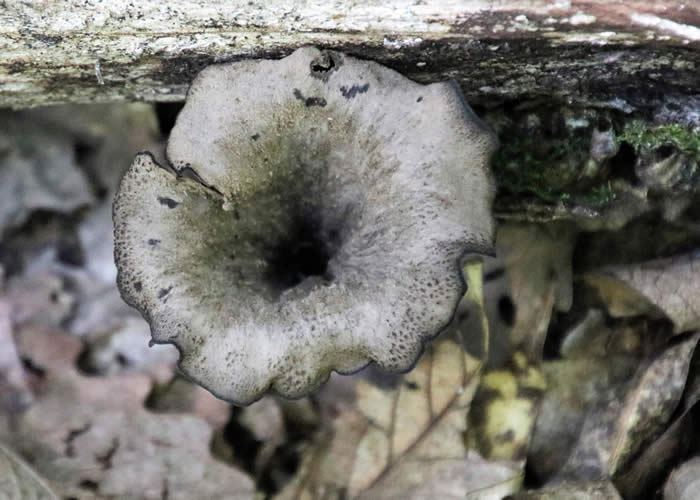 |
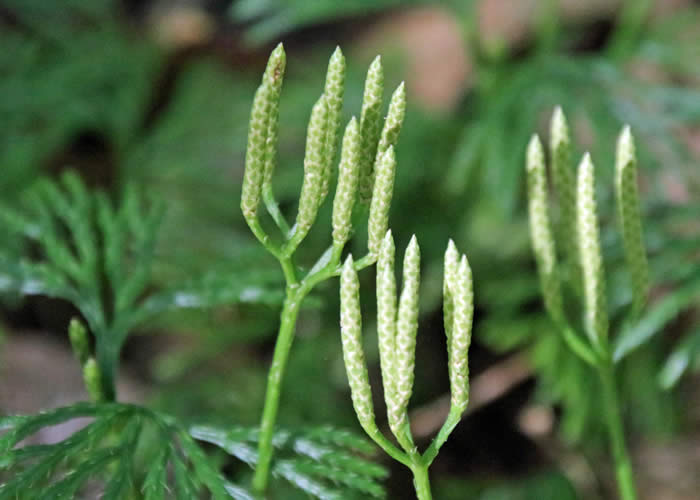 |
|
| An old chanterelle? | Ground-pine clubmoss is evergreen. Its spores are flammable and were used in American Indian ceremonies. |
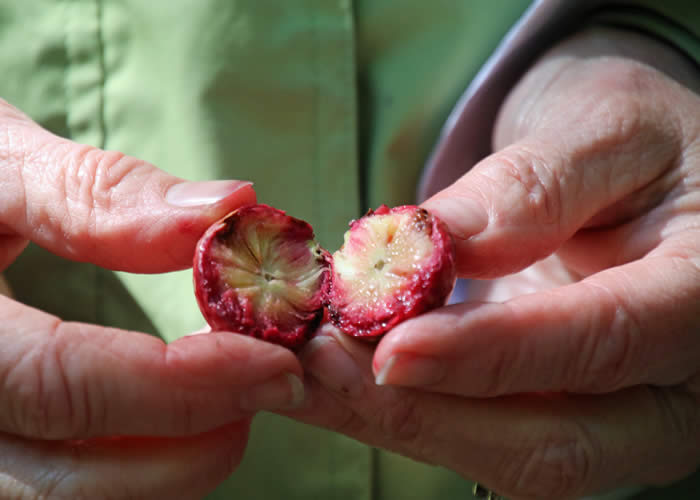 |
|
| An acorn plum gall, the nursery of a tiny wasp. |
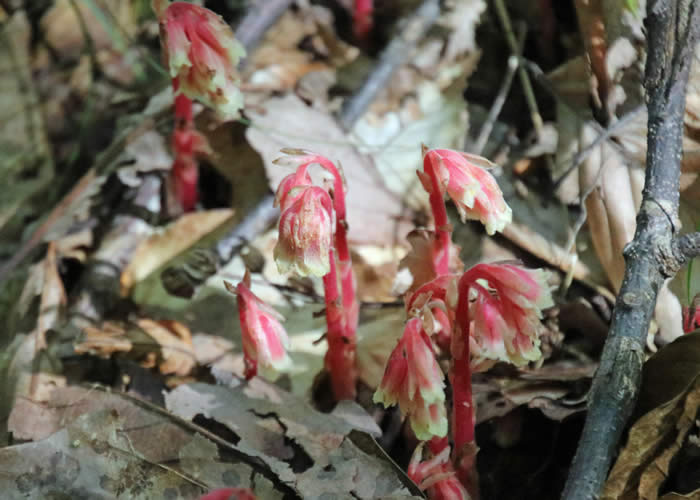 |
|
| In the same family as the blueberry, these false beechdrops are unlike other plants that make their own food from sunlight. Instead, they tap into underground threads of fungus for their nutrients. | |
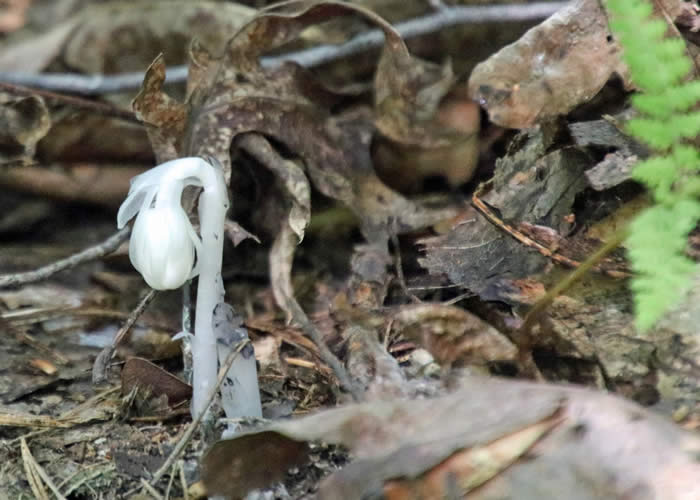 |
|
Ghost plant, also known as Indian pipe, grows from the leaf litter. |
|
 |
A beautiful Monarch butterfly in the making. |
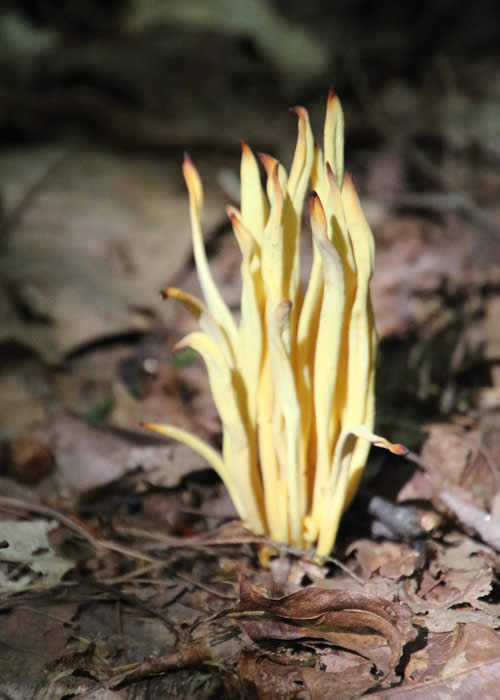 |
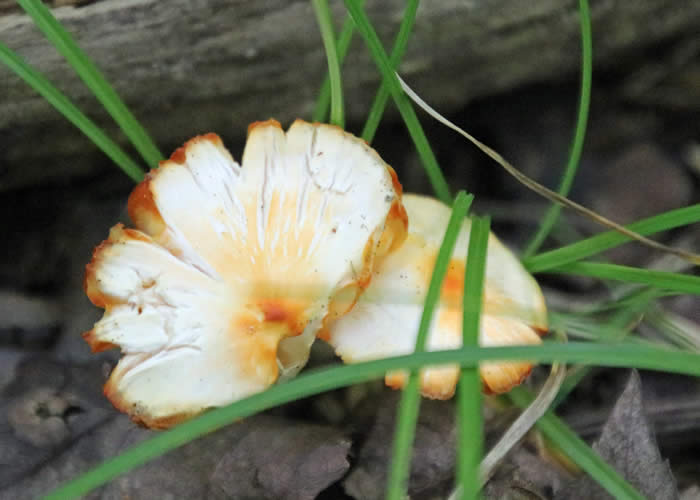 |
| Yellow spindle coral fungus is also known as fairy fingers. | Many mushrooms are edible, but many are not. Know your fungus! |
Comments from other hikers:
Be the first to comment!
Share your experiences of this trail -- what you saw, how you liked it:
